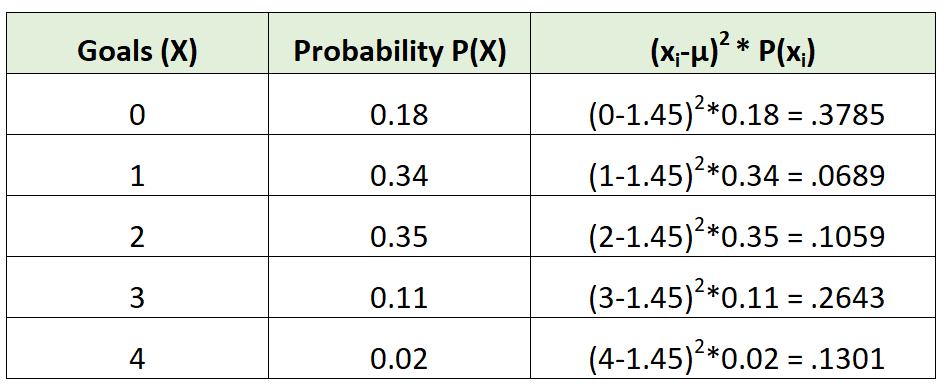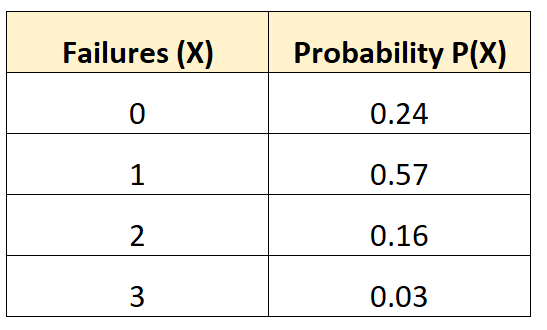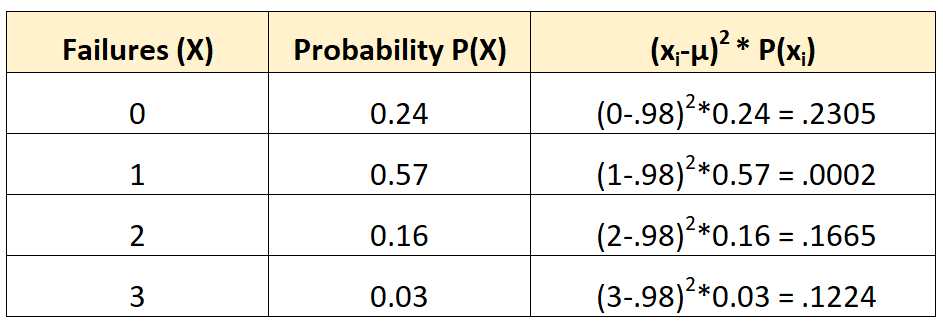A probability distribution tells us the probability that a random variable takes on certain values.
For example, the following probability distribution tells us the probability that a certain soccer team scores a certain number of goals in a given game:

To find the standard deviation of a probability distribution, we can use the following formula:
σ = √Σ(xi-μ)2 * P(xi)
where:
- xi: The ith value
- μ: The mean of the distribution
- P(xi): The probability of the ith value
For example, consider our probability distribution for the soccer team:

The mean number of goals for the soccer team would be calculated as:
μ = 0*0.18 + 1*0.34 + 2*0.35 + 3*0.11 + 4*0.02 = 1.45 goals.
We could then calculate the standard deviation as:

The standard deviation is the square root of the sum of the values in the third column. Thus, we would calculate it as:
Standard deviation = √(.3785 + .0689 + .1059 + .2643 + .1301) = 0.9734
The variance is simply the standard deviation squared, so:
Variance = .97342 = 0.9475
The following examples show how to calculate the standard deviation of a probability distribution in a few other scenarios.
Example 1: Standard Deviation of Vehicle Failures
The following probability distribution tells us the probability that a given vehicle experiences a certain number of battery failures during a 10-year span:

Question: What is the standard deviation of the number of failures for this vehicle?
Solution: The mean number of expected failures is calculated as:
μ = 0*0.24 + 1*0.57 + 2*0.16 + 3*0.03 = 0.98 failures.
We could then calculate the standard deviation as:

The standard deviation is the square root of the sum of the values in the third column. Thus, we would calculate it as:
Standard deviation = √(.2305 + .0002 + .1665 + .1224) = 0.7208
Example 2: Standard Deviation of Sales
The following probability distribution tells us the probability that a given salesman will make a certain number of sales in the upcoming month:

Question: What is the standard deviation of the number of sales for this salesman in the upcoming month?
Solution: The mean number of expected sales is calculated as:
μ = 10*.24 + 20*.31 + 30*0.39 + 40*0.06 = 22.7 sales.
We could then calculate the standard deviation as:

The standard deviation is the square root of the sum of the values in the third column. Thus, we would calculate it as:
Standard deviation = √(38.7096 + 2.2599 + 20.7831 + 17.9574) = 8.928
Additional Resources
How to Find the Mean of a Probability Distribution
Probability Distribution Calculator